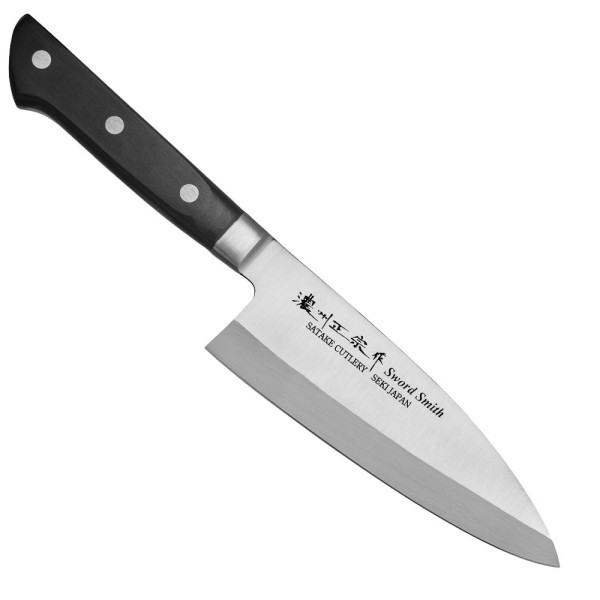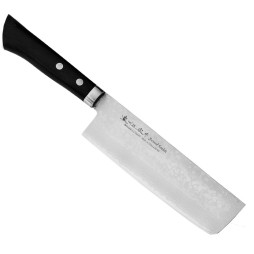
- Availability: 1
- Model: 803694
Satake Satoru Deba kitchen knife 16 cm
This traditional Japanese knife with its thick, half-sided blade is ideal for processing and filleting fish while maintaining the texture of the meat. It is also often used in Japan to process poultry meat, but it is important to note that this is not a classic bard and should not be hit hard with it. To cut the bone, it is enough to press lightly on the back of the knife while making a quick, precise cut. The sharp tip and short blade provide excellent control, which is especially beneficial when cutting in tight spaces.
The name of the knife comes from the word "deba" (出刃), which means "to cut outward", referring to the knife's characteristic use. Debai knives are of ancient origin and have been used in Japanese cuisine for centuries. During the Kamakura period (1185-1333), artisans began to perfect the blade of Debai knives to make the processing of fish even more efficient. The knife soon became an essential tool in Japanese fish markets and households. The blade of Debai knives is usually 15-21 cm long and is made of thick, solid steel. The conical shape of the blade enables precise cutting and easy separation of bones from meat. Debai knives typically have a single-sided sharpening, which provides better controllability during cutting.
Debai knives can not only be used for processing fish, but are also ideal for other kitchen tasks, such as processing poultry, chopping vegetables or even cutting meat. The knife's versatility and efficiency make it a popular choice among both professional chefs and housewives.
Additional parameters
Blade material - AUS-8A stainless steel
Handle material - Hard plastic laminate
Hardness - 58-59 HRC
Total length - 29.8 cm
Blade length - 16.4 cm
Blade width - 5.1 cm
Blade thickness - approx. 2.9 mm
Cutting edge design - single-sided
Weight - approx. 215 g





























